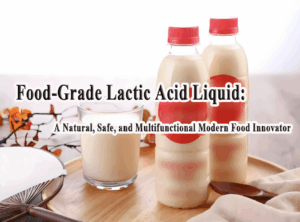Toiduainekvaliteediga ammooniumkloriid - uus lõhna- ja maitseaine

Food Grade Ammonium Chloride – a new flavoring agent
The appearance of food grade ammonium chloride is colorless crystal or white granular powder, and is odorless. The taste is salty and bitter.
In theory, ammonium chloride has a low moisture absorption capacity, but it can also be agglomerated when stored in a humid environment, similar to sodium bicarbonate.
However, it is worth noting that the powdered food grade ammonium chloride has a strong moisture absorption capacity, especially wet ammonium. The moisture absorption point is usually about 76%. When the relative humidity in the air is greater than the moisture absorption point, the food grade ammonium chloride produces a significant moisture absorption phenomenon and is prone to agglomeration.
It can sublimate without melting point.
The relative density is 1.5274.
The heat of sublimationis 350°C.
Boiling point is 520°C.
Soluble in water, slightly soluble in ethanol, soluble in liquid ammonia, insoluble in acetone and ether.
Compared with industrial grade ammonium chloride, food grade ammonium chloride has high purity (99.5%-99.8%), extremely low impurity content and low heavy metal ion content.
In recent years, food grade ammonium chloride has become more and more widely used in food, mainly for the following purposes:
A nutrient and dough improver that can be used in yeasts.
Alternatives to salt (sodium chloride), at home and abroad, with the rejuvenation of cardiovascular and cerebrovascular diseases such as hypertension.
More and more food manufacturers use ammonium chloride instead of sodium chloride as a taste agent.
Used as a processing aid in bread, biscuits, etc.
Food grade ammonium chloride as a yeast nutrient is a highly efficient source of nitrogen nutrients (mainly used in the brewing of alcohol and soy sauce). It is based on the active dry yeast of white wine as the experimental blueprint, with the same nitrogen concentration of ammonium chloride and urea. The ammonium nitrate YNB liquid medium was used as a comparative experiment. The growth rate and growth quality of the flora in the culture medium with ammonium chloride as the nitrogen source far exceeded the other two culture liquids.
The food grade ammonium chloride is generally used as a dough conditioner in combination with sodium bicarbonate in an amount of about 25% of sodium bicarbonate or 10 to 20 g/kg of wheat flour.
The addition of a mixture of vitamin C and ammonium chloride gives the dough good elasticity, extensibility and machinability, giving the bread a good volume, color, sweet smell, good shape and elasticity. And using this additive is safer than using potassium bromate.
Because eating too much sodium chloride is obviously harmful to the body, a series of studies have shown that long-term excessive salt can not only cause and aggravate high blood pressure, but also cause kidney disease, aggravate diabetes, exacerbate asthma, prone to osteoporosis and even fractures. It may cause also many chronic diseases such as the stomach digestive system.
In the developed western society, a mixture of ammonium chloride, potassium chloride and partially hydrolyzed protein and plant polypeptide is gradually used to replace salt, making it a nutritious functional seasoning widely used in bread and biscuits.
In many countries and places, ammonium chloride and licorice are used as a flavoring agent (black crystal shape) for various foods (such as braised chicken in Finland, lazy rice in Sweden, noodles in the Netherlands, blood products in Denmark, etc.), There is also the addition of ammonium chloride as a flavoring agent to vodka.












